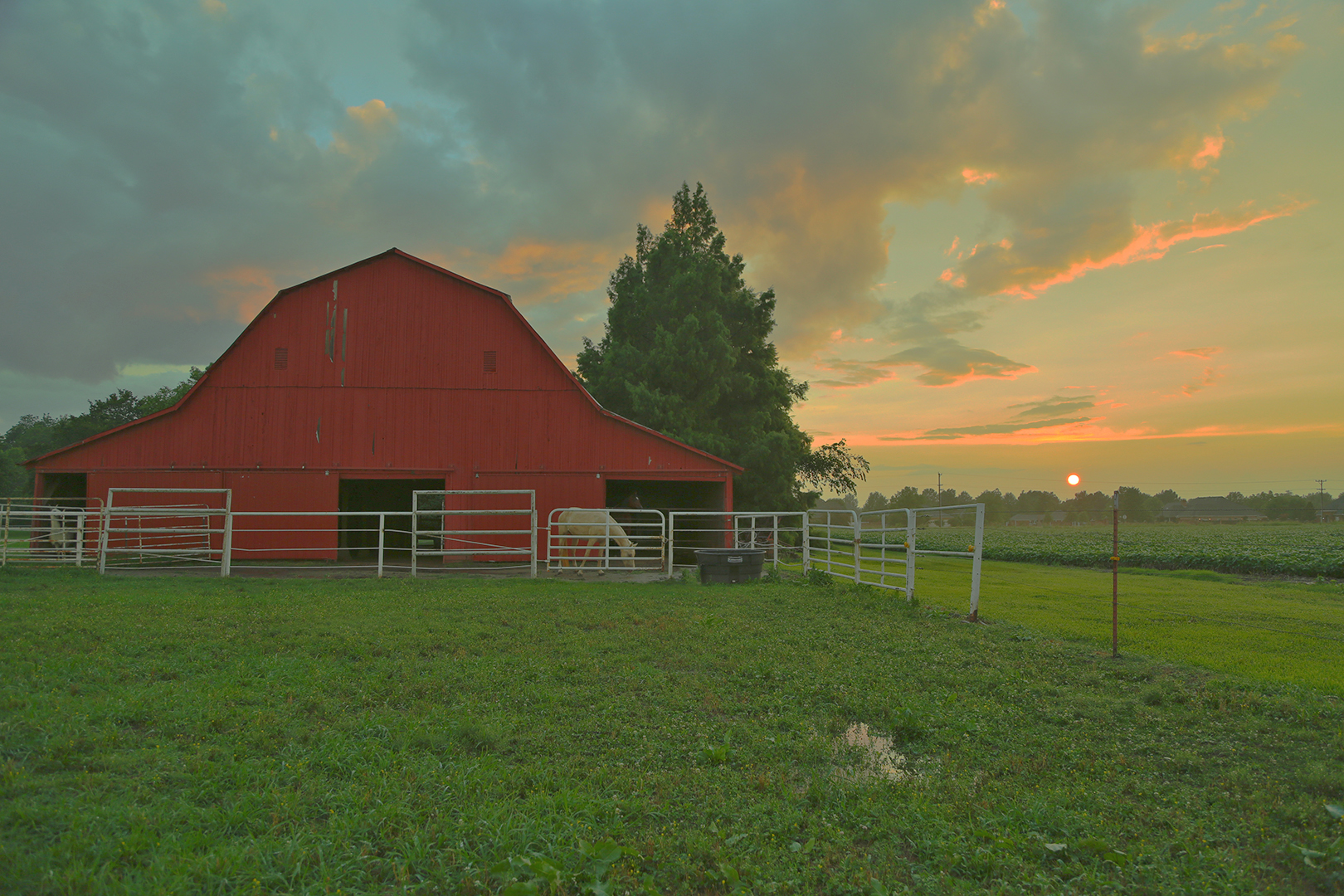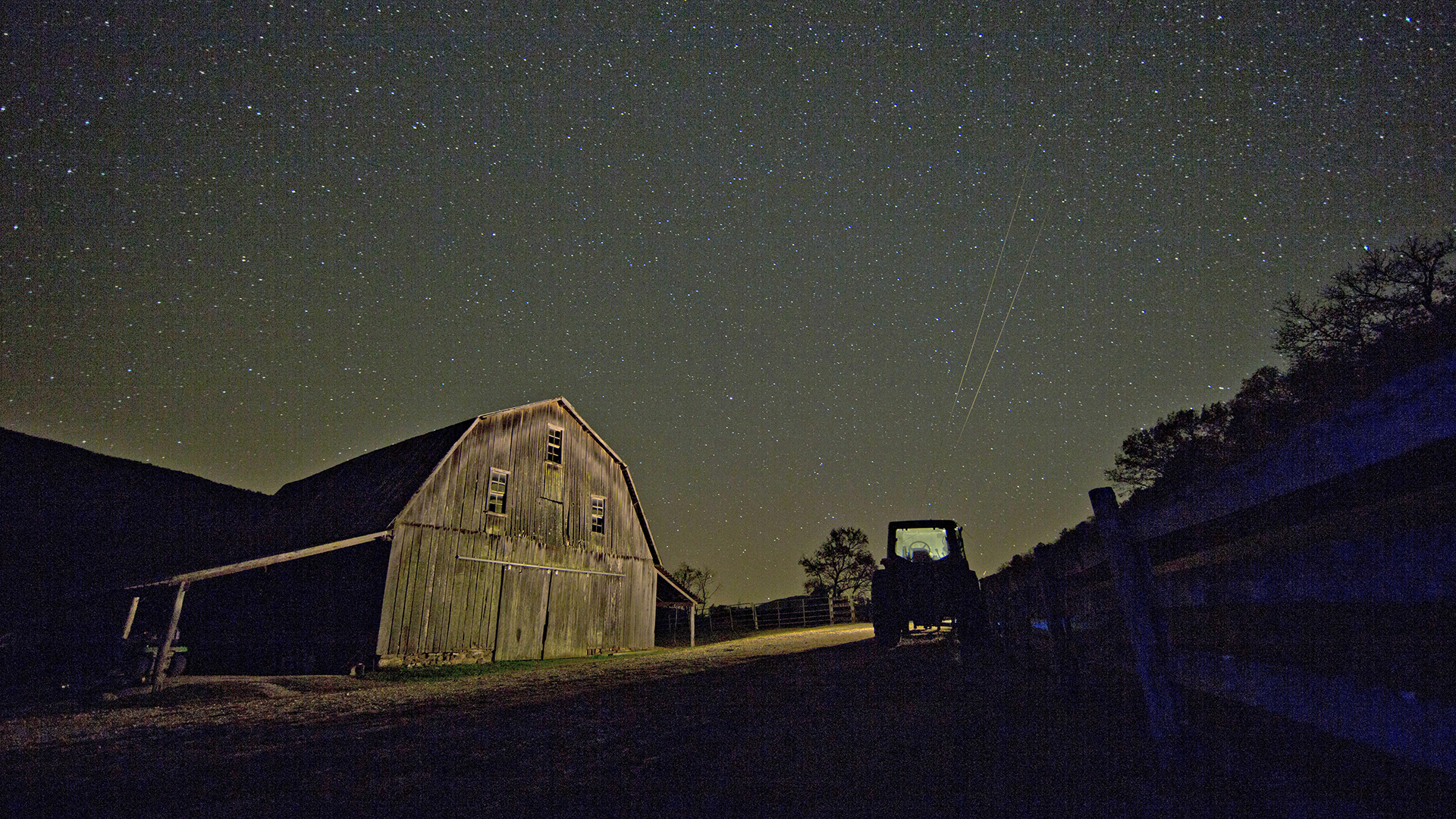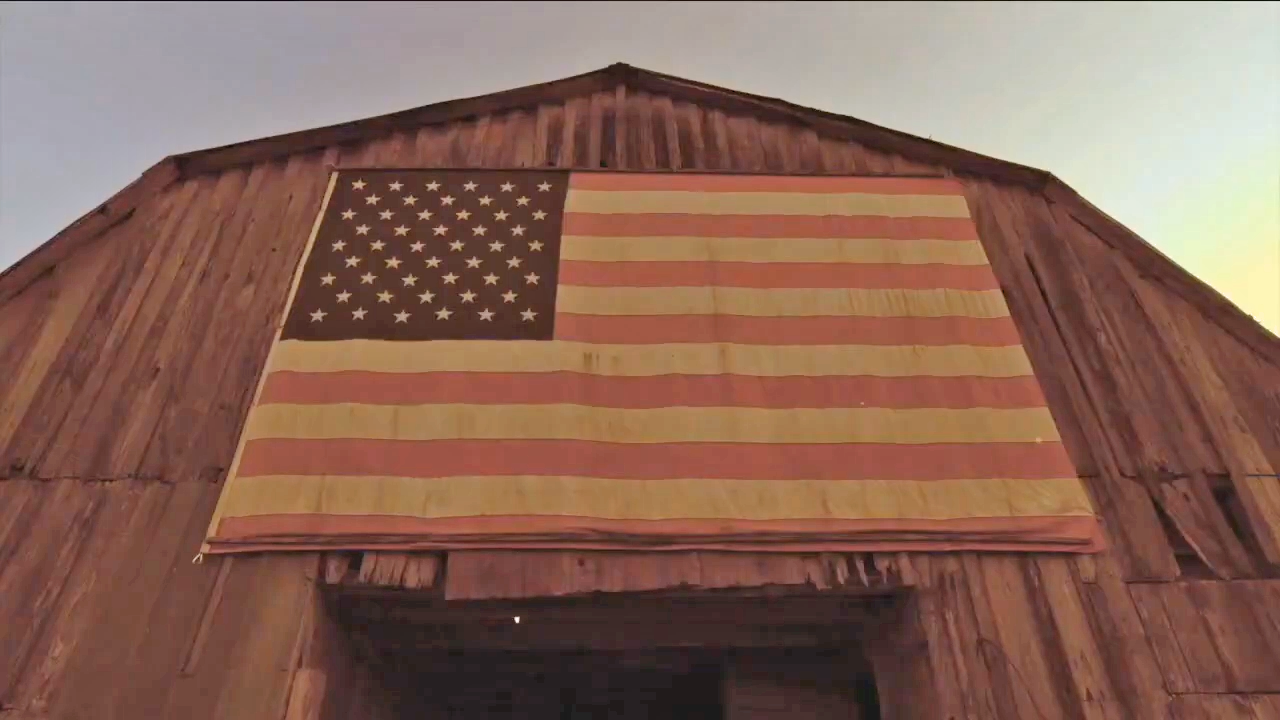“Barns are a part of our landscape, lining our roads like loyal ancient sentries,” Missouri State University Noel Boyd Professor of Ozarks Studies Brooks Blevins narrates. “Like a log and frame beacon of a lost world, they remind us of a past lived close to the dirt, of a time when we understood just how much we depend on the earth, a time when we worked the ground and communed with it. Weathered and worn, barns seemed to be an extension of the earth itself, crafted by hands long since returned to the soil. Imagined by minds no longer among us. They remind us that this is how we once lived.”
The Arkansas PBS original production “Back Road Barns of Arkansas” evokes that sense of nostalgia for Arkansas’s rich agricultural history. “Back Road Barns of Arkansas,” produced by Kevin Clark, will air Thursday, Jan. 23, at 7 p.m. as part of our “From the Archives” series.
Originally broadcast in 2016, “Back Road Barns of Arkansas” takes viewers on a virtual road trip to classic barns that have long been a part of our culture, barns that reflect what it means to be a farmer and what a family farm is all about.
From the first shot of a barn in this film, Hendrix College graduate Dana Falconberry croons “I’m not really alone” from her song “Possum Song” as viewers are presented with shots of barns that pepper the Arkansas landscape.

Finding the Barns
While working on a separate agriculture program, Clark took on shooting “Back Road Barns of Arkansas,” touring the state to find the stories of these barns.
“The ones that survived being torn down in favor of metal buildings only survived because of the care and love of the caretakers,” he said. “Some of these barns, I literally stumbled upon. I was out doing another story, and I’d pass a barn and go knock on the door, telling them what I’m doing. Without fail, they were so generous with their time and their stories.”
Clark reminisced on how easy it was to shoot these barns.
“You just take your camera out, set it up, and it’s just there,” he said. “The composition. You point your camera anywhere, and it’s going to be beautiful.”

Vehicles for Emotion
While shooting these barns and interviewing the people whose families owned these barns for decades, Clark realized how much emotion was within the walls of the barns. Spending nights in a barn to capture timelapse or hearing stories of lost loved ones made him feel attached to these structures.
“I remember with a lot of affection taking my daughter out with me to shoot a timelapse of the stars and the Milky Way over these barns,” he said. “Spending four to six hours as the Milky Way travels across the sky, babysitting your camera as it takes a picture every 20 seconds. She’s 21 now, and we still talk about the night we spent in the barn. It’s one of the most pleasant memories I have of working at Arkansas PBS.”
The touching story that Judy Smith shares of the Smith Barn, which anyone who travels Highway 65 near Marshall will recognize, will grip viewers who have ever lost a loved one.
“You just get attached to some of these stories,” Clark said. “The Smith Barn comes to mind. The story that Judy shared with me in her kitchen about her husband and his passing was beautiful.”

Stories that Shape a Community
Many of these barns have stayed within families for generations. Several barns lend a sense of pride to the communities where they’re found, such as the Driftwood Barn in Mountain View where people gather for music, or the Branson Barn near Dumas that has members asking if Christmas lights will be displayed on the barn during the holidays.
Viewers will learn that some barns in the state helped communities while being built during The Great Depression. Viewers will also see a barn that is covered in license plates that has become a popular spot for senior photos, and the barn in Piggott where Ernest Hemingway wrote portions of “A Farewell to Arms” as well as other short stories.
The stories shaped by these barns are evident and quite touching, leaving lasting memories.
“That flag is for my brother Marion Ray Hutchins,” Kim Henderson said of the Old Hutchins Barn. “He was killed in Vietnam in 1967. I just know that if he could have one more day on this farm – that was probably his special thought to go back to every moment of every day. That’s why that flag is there. When I look at that, I think of him. There’s no way I could tear it down.”

The Personality of a Barn
Barns are often painted red, sealing and preserving the wood to last longer. It’s a practice known in other parts of the country, as Blevins describes. However, in Arkansas, red barns are not the norm because the paint may not have been as easily obtainable. Because of this, many barns in Arkansas have deteriorated to some extent. Some have been rebuilt or renovated.
Clark said that not only do the barns have their own personalities, but also sometimes the personalities of the barns are reflected in the people talking about them.
“My favorite one is the shoot at Hargrave Corner,” he said. “It was the white barn. There were several white barns. Martha Jane was sitting on the couch, and she said, ‘Oh gosh! We can’t think of the young man’s name that built it!’ She gets up and the mic goes flying after her. That was a barn I just drove past. I turned around and drove right back.”
See and hear the stories of the barns that represent Arkansas’s agricultural past in “Back Road Barns of Arkansas.”
How to Watch
“Back Road Barns of Arkansas” airs Thursday, Jan. 23, at 7 p.m. as part of the “From the Archives” series.
How to Watch on Demand
“Back Road Barns of Arkansas” is available on demand at myarpbs.org/youtube.

